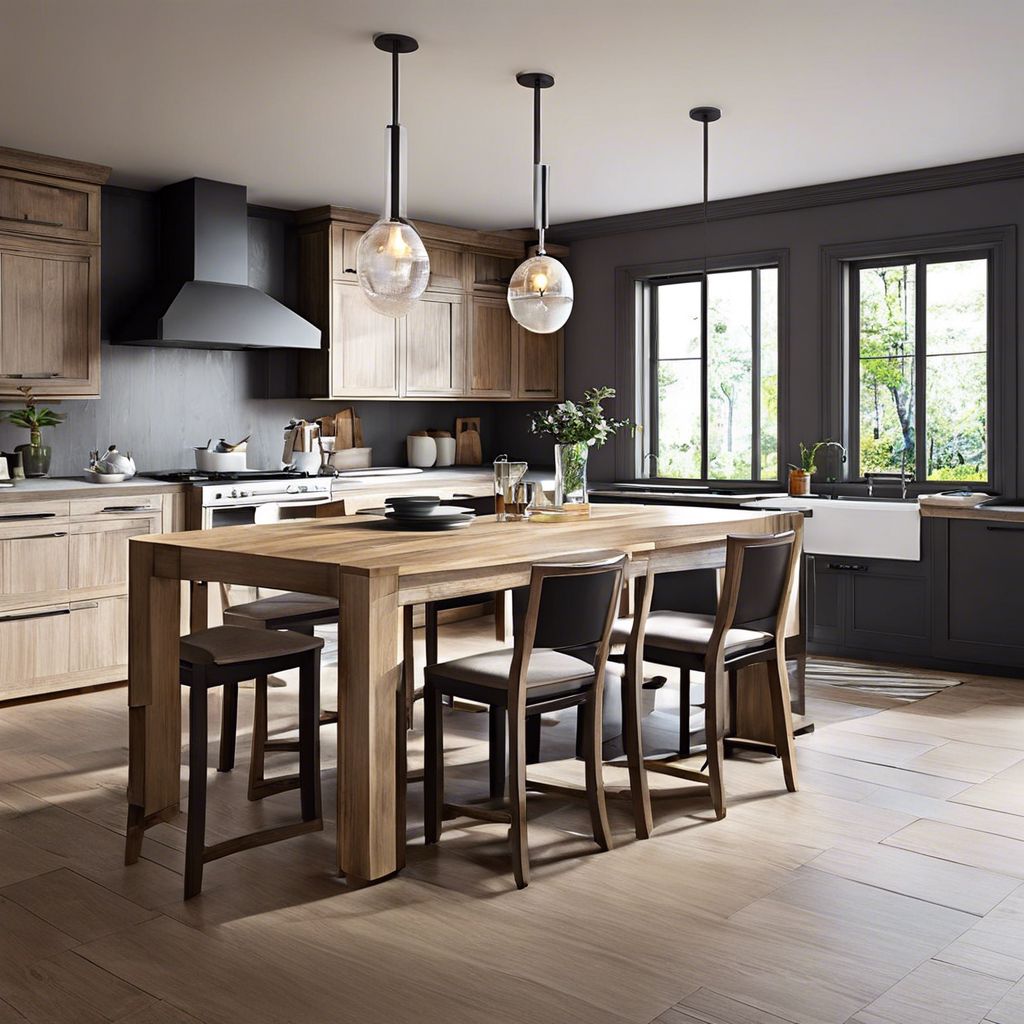
Key Takeaways
- Refinishing a wood kitchen table is typically more cost-effective than refurbishing, with costs ranging depending on materials.
- Assessing the condition of your table is essential to determine whether to refinish or refurbish.
- A standard refinishing toolkit includes sandpaper, stain, sealant, and possibly a stripper and putty knife.
- Stripping and sanding are essential steps in refinishing, preparing the surface for staining and sealing.
- Choosing the right stain and sealant can protect your table and enhance its appearance for years to come.
Timber Tales: Understanding the Strengths of Solid Wood for Your Kitchen Table
Let’s talk about solid wood, the stalwart underpinning so many kitchen tables. Solid wood is durable, can last generations, and has that timeless appeal that makes it a popular choice for a kitchen centerpiece. But even the strongest woods aren’t immune to the wear and tear of daily life. Scratches, heat marks, and the occasional unfortunate coloring mishap from a craft project gone rogue can all take their toll. Here’s where we roll up our sleeves and decide: to refinish or refurbish?
Refinish or Refurbish?
Before we dive into the nitty-gritty, let’s clarify the difference between refinishing and refurbishing. Refinishing involves stripping your table of its old finish, sanding it down, and applying new stain and sealant. Refurbishing, on the other hand, might involve altering the table’s structure, such as changing its legs or top, to give it a completely new look and possibly a new function. Each route has its own set of considerations, and the right path for you depends on what you’re looking to achieve.
Refinishing vs Refurbishing: Quick Comparison
| Refinishing | Refurbishing | |
|---|---|---|
| Cost | $50 to $150 | between $200 and $500 for a basic remodel |
| Timeline | Completed in a weekend | Takes several weekends |
| Pros | Budget-friendly, quick update, maintains table’s original charm | Completely redefines the table |
| Cons | Fixes only superficial issues | More expensive, takes time to finish, complex |
The Magic of Refinishing: A Cost-Effective Transformation
Refinishing is the go-to choice when you love your table’s current style but it’s looking a bit tired. This process can erase years of use, revealing the beauty of the wood grain once more. It’s like giving your table a spa day — except you’re the one doing the pampering.
Refurbishing for a Fresh Start: When is it worth it?
On the flip side, refurbishing is your best bet when you’re looking for a bigger change. Maybe you’ve inherited a sturdy table but it’s just not your style, or perhaps you’ve done a full kitchen reno and your old table just doesn’t fit the new vibe. Refurbishing can be more of an investment, but it’s worth it if it means falling in love with your table all over again.
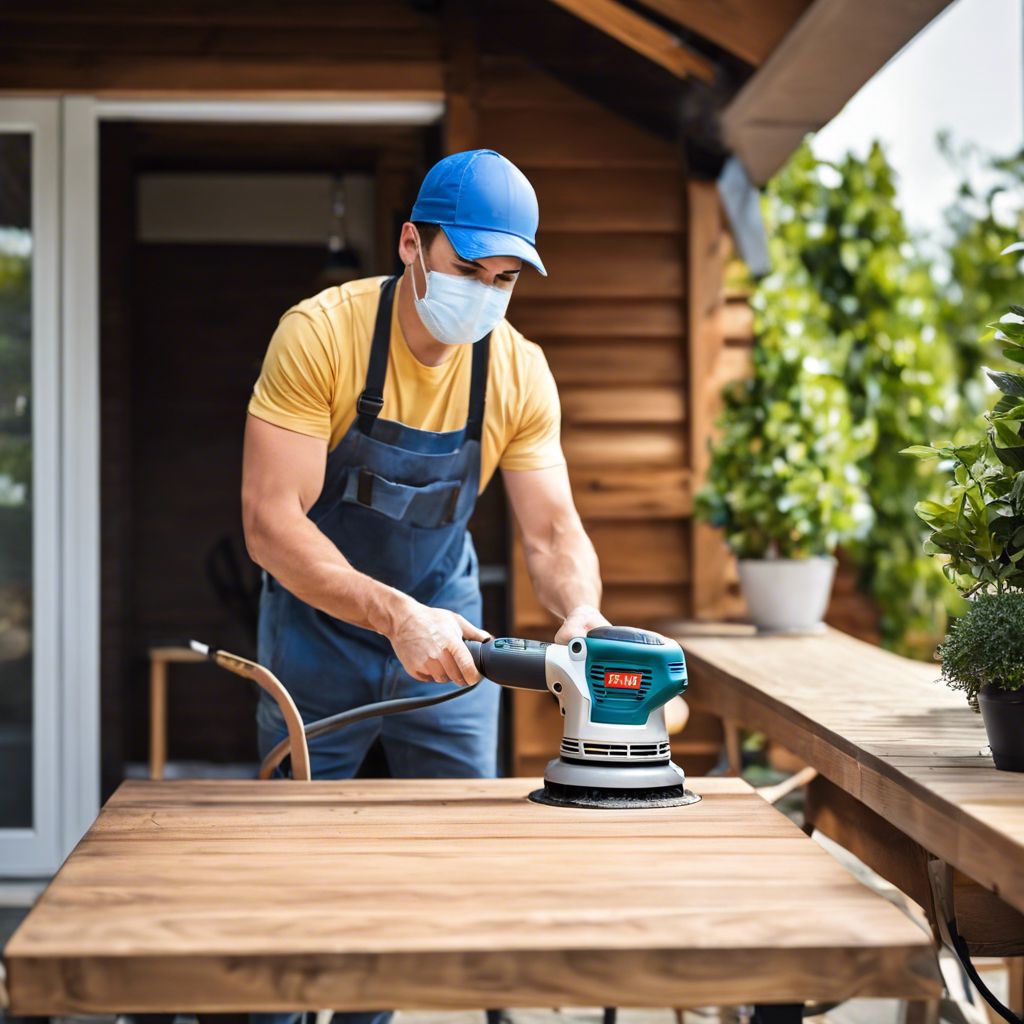
Refinishing Your Solid Wood Table
Let’s say you’ve decided to refinish your table. Where do you start? First, take a good, hard look at your table. Run your hand across the surface. Are there deep gouges or just superficial scratches? Is the finish flaking off, or is it just dull? This initial assessment will guide your entire refinishing process.
If your table is mostly in good shape, with no major damage, refinishing is a viable option. If it’s wobbly or has deeper structural issues, you might need to address those before you start — or consider whether redesigning is a better choice.
Assessing Your Table’s Condition
Look for:
- Surface scratches that can be sanded out.
- Deep gouges that might require wood filler.
- Signs of structural damage, like loose legs or a wobbly top.
- The condition of the current finish: is it cracked, peeling, or blistering?
Remember, if your table has sentimental value, that might tip the scales in favor of refinishing, even if it requires a bit more TLC.
Gathering Your Refinishing Toolkit
Here’s what you’ll need to get started:
- Sandpaper in various grits (100, 150, and 220 should cover your bases).
- A good quality wood stain in the color of your choice.
- A sealant, like polyurethane or Tung oil, to protect your finished work.
- If your table is painted or varnished, you’ll need a stripper and putty knife to remove the old finish.
- Fine steel wool for buffing between coats of sealant.
- Disposable gloves and brushes or rags for applying stain and sealant.
With these tools in hand, you’re ready to start the transformation.
Step-by-Step Guide to Refinishing
Now, let’s break down the refinishing process:
- Set up a ventilated workspace and protect surfaces.
- Start by stripping any old paint or varnish, if necessary.
- Sand the table down, starting with the coarsest grit and working your way up to the finest.
- Wipe down the table to remove all dust from sanding.
- Apply the stain evenly, following the wood’s grain, and let it dry.
- Once the stain is dry, apply the first coat of sealant. Let it dry, then buff with steel wool.
- Apply additional coats of sealant, buffing between each, until you achieve the desired finish.
This process is simple enough for a beginner but can have dramatic results. Just remember to work in a well-ventilated area and take your time. A rushed job never looks as good as one done with care.
Stripping and Sanding Techniques
If you’re dealing with a painted or heavily varnished table, stripping can be a bit messy, but it’s essential for getting down to the raw wood. Apply the stripper according to the manufacturer’s instructions, then use your putty knife to gently scrape away the old finish. Be careful not to gouge the wood.
When it comes to sanding, start with 100-grit sandpaper to remove any remaining finish and smooth out rough spots. Move up to 150-grit to start refining the surface, and finish with 220-grit for a smooth-to-the-touch feel. Always sand in the direction of the wood grain to avoid scratches.
Choosing the Right Stain and Sealants
Choosing the right sealants and stains for refinishing a solid wood kitchen table is essential for achieving the desired look and durability. First, think about how much protection you need—polyurethane for busy tables, or maybe varnish for a shiny finish. If you prefer a more natural look, oils like tung or linseed would be your best choice. When it comes to stains, water-based ones dry fast and clean up easily, while oil-based ones give you those rich hues. Remember, it’s all about what suits your style and upkeep preferences.
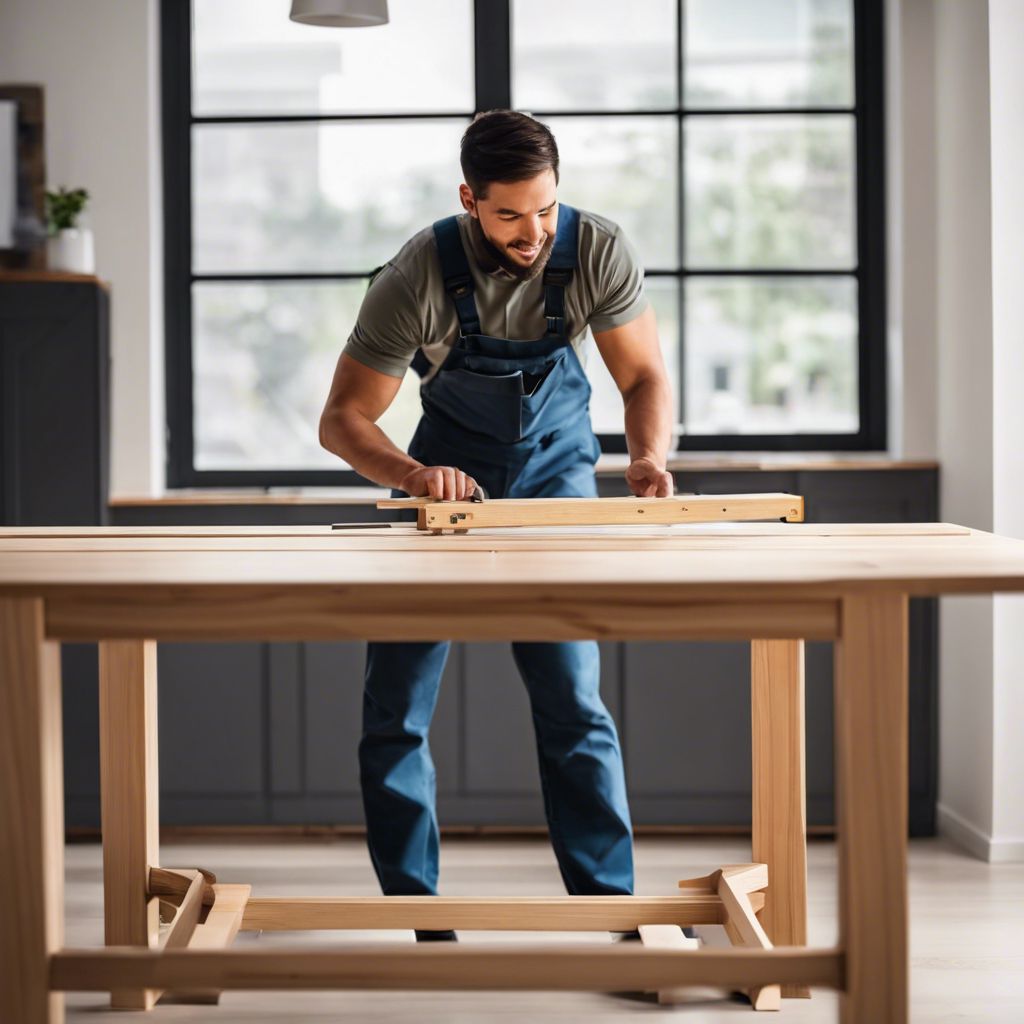
Taking the Refurbishing Route for Your Solid Wood Kitchen Table
But maybe you’re not just looking to refresh; you’re ready to reinvent. Refurbishing your kitchen table can be a thrilling project that allows you to express your personal style and fit the specific needs of your space. It’s about more than a facelift; it’s about transformation.
Tips for a Successful Refurbish
Success in refurbishing your wood kitchen table starts with a solid plan. First, consider the scope of your project. Are you updating the legs, changing the shape of the tabletop, or adding new features like leaves for expandability? Once you’ve nailed down what you want to change, it’s time to gather your materials and tools. Keep in mind that while refurbishing can be more expensive than refinishing, the end result is a custom piece tailored to your taste and lifestyle.
Finding Inspiration and Setting a Vision
Before you start sawing and sanding, take a moment to find your inspiration. Flip through home design magazines, scroll through Pinterest, or visit furniture stores to get a feel for what excites you. Once you have a vision, sketch it out or create a mood board. This will serve as your roadmap and help keep your project on track.
Selecting New Table Legs or Features
Choosing the right legs can dramatically alter the look of your table. Consider the overall style of your home—is it modern, rustic, or perhaps mid-century? Pick legs that complement this style. And don’t forget functionality; for instance, if you need more legroom, opt for a pedestal base. When it comes to features, think about what would make the table more usable for you. Perhaps an added drawer for utensils or a built-in Lazy Susan?
Also, remember to measure twice and cut once. Precision is key in refurbishing, and even a small miscalculation can throw off your entire design.
Mastering the Art of Tabletop Refurbish
Refurbishing your tabletop can be as simple as changing its shape or as complex as adding intricate inlays or patterns. If you’re not an experienced woodworker, don’t shy away from seeking help or even outsourcing this part of the project. The tabletop is the star of the show, and it’s worth getting it right.
When selecting materials, consider the wear and tear your table will endure. A kitchen table needs to withstand heat, spills, and scratches, so choose a wood type or finish that can hold up to your daily life.
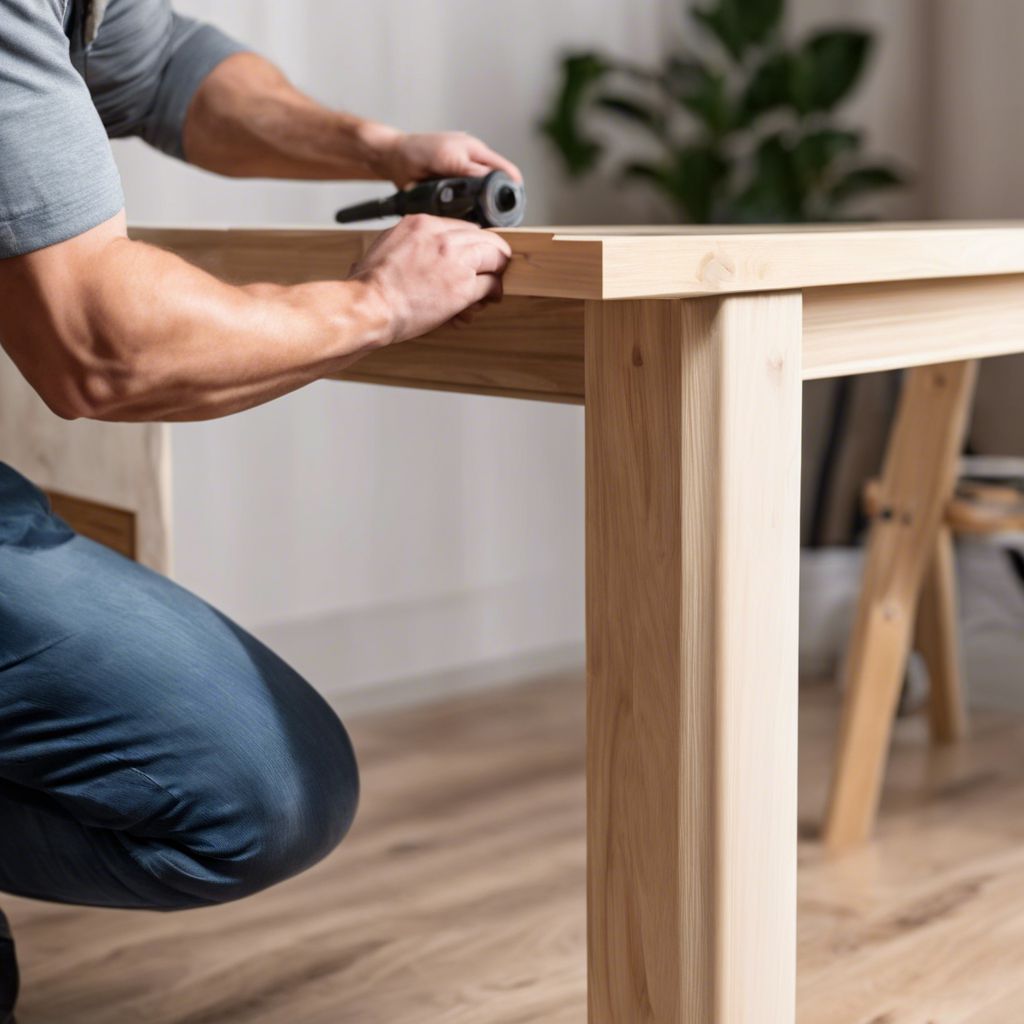
Comparison for Clarity
Now, let’s put refinishing and refurbishing side by side to see how they stack up. Both options have their merits, and understanding the differences can help you make an informed decision.
Cost Analysis: Refinish vs. Refurbish
When it comes to cost, refinishing is usually the more wallet-friendly option. You might spend money on sandpaper, stain, and sealant, while refurbishing could require new wood, hardware, and potentially professional help. For a basic refinishing project, you might spend anywhere from $50 to $150, depending on the size of your table and the products you choose. Refurbishing, however, can cost between $200 and $500 for a basic refurbish and may increase for more extensive changes.
Time Investment: Patience Pays Off
Refinishing a table is a weekend project for most. Set aside time to do it right, and you’ll be rewarded with a like-new table by Sunday night. Refurbishing, with its more complex changes, demands a greater time investment. It could take several weekends to complete, especially if you’re learning new techniques or waiting for custom parts to arrive.
Durability Debate: Long-lasting Results
Both refinishing and refurbishing can give you a durable table, but the longevity of the results depends on the quality of your work and materials. A well-refinished table can last for decades, while a refurbish could either extend or shorten the life of your table, depending on how drastic the changes are and how well they’re executed.
Aesthetic Achievements: Beauty in the Details
Aesthetics are often the driving force behind the decision to refinish or refurbish. Refinishing allows you to restore the table to its original glory or update its look to match current trends. Refurbishing, however, offers the chance to completely redefine the piece. It’s about creating a focal point that reflects your personal style and fits seamlessly into your home’s design narrative.
Refinish or Refurbish: Making Your Decision
So, which route should you take? Consider your goals, budget, and skill level. If you’re after a quick update and have a tight budget, refinishing is the way to go. But if you’re craving a custom piece and are willing to invest more time and resources, refurbishing could be your answer.
Ultimately, whether you choose to refinish or refurbish, the process should be enjoyable and the result should be a table you’re proud to gather around for years to come.
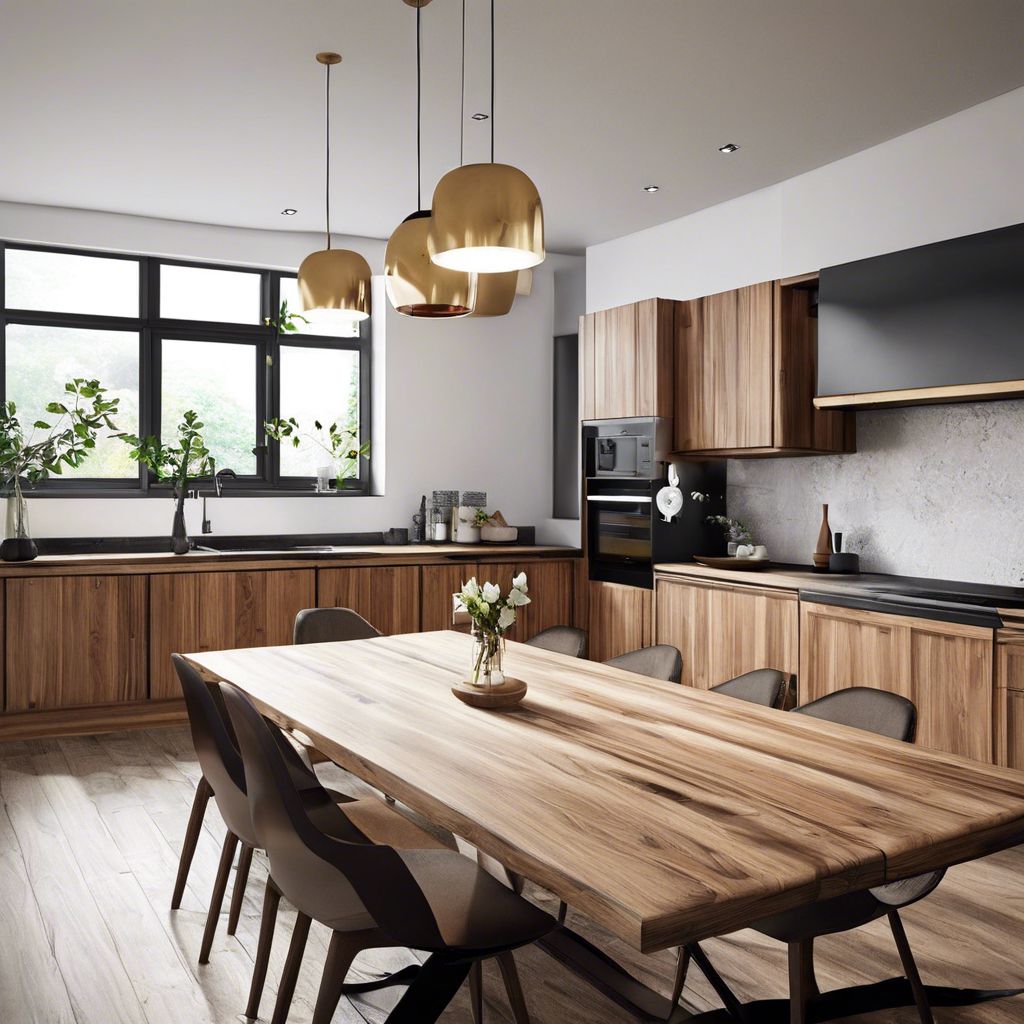
Frequently Asked Questions
Can I refinish a table without sanding?
Technically, yes, you can refinish a table without sanding by using a chemical stripper to remove the old finish. However, sanding is recommended to achieve the smoothest possible surface before applying a new stain or sealant. If you’re looking to skip the sanding to save time or effort, make sure you’re prepared for a potentially less-than-perfect finish.
How much does it typically cost to refurbish a solid wood table?
The cost of refurbishing a solid wood table can vary widely, from a few hundred dollars to several thousand. It depends on factors like the size of the table, the materials you choose, and whether you’re doing the work yourself or hiring someone. For a basic refurbish with new legs and a fresh coat of paint or stain, you might spend between $200 and $500. For more extensive changes, like a new tabletop or custom features, the costs will be higher.
What if I find more damage once I start the refurbishment process?
It’s not uncommon to uncover additional issues once you start working on a table. If you find more damage, take a step back and assess how to refurbish a table. You might need to adjust your plan, gather different materials, or even seek professional help. The key is to address these issues before moving forward to ensure the longevity of your table.
For example, if you discover that the table’s legs are not just scratched but also loose and wobbly, you’ll need to tighten the hardware or possibly replace the legs altogether before you refurbish the tabletop.
How can I ensure the new design of my refurbished table fits my home’s style?
To ensure your refurbished table fits with the rest of your home, start by considering the overall style and color scheme of your space. Choose materials and colors that complement or contrast with your existing décor in a pleasing way. It’s also helpful to create a mood board with images of your home and potential table designs to visualize how everything will come together.
Don’t be afraid to mix styles, either. A contemporary table can look stunning in a traditional kitchen, if done thoughtfully. The key is cohesion, not necessarily matching every element.
Is there a sustainable way to refurbish a wood kitchen table?
Yes, there are several sustainable approaches to refurbishing a wood kitchen table. You can choose eco-friendly stains and sealants with low volatile organic compound (VOC) levels. Reusing hardware and sourcing reclaimed wood for any new parts is another great way to reduce your environmental impact. Most importantly, by refurbishing instead of buying new, you’re already making a sustainable choice.





Leave a Reply